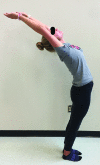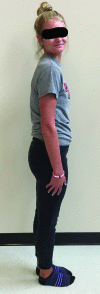INTRA- AND INTER-RATER RELIABILITY OF THE SELECTIVE FUNCTIONAL MOVEMENT ASSESSMENT (SFMA) IN HEALTHY PARTICIPANTS
- PMID: 30746297
- PMCID: PMC6350656
INTRA- AND INTER-RATER RELIABILITY OF THE SELECTIVE FUNCTIONAL MOVEMENT ASSESSMENT (SFMA) IN HEALTHY PARTICIPANTS
Abstract
Background: The Selective Functional Movement Assessment (SFMA) is a popular assessment tool used to observe and detect components of dysfunctional movement patterns. The goal of the assessment is to identify impairments throughout the kinetic chain that may be contributing to movement dysfunction and/or pain.
Hypothesis/purpose: The purpose of this research was to determine the intra- and inter-rater reliability of the 10 top-tier movements of the SFMA using the categorical scoring system. It was hypothesized the intra- and inter-rater reliability of the SFMA would be acceptable with variations based on the objectivity of the scoring criteria and the experience of the rater.
Study design: Cross-sectional reliability study.
Methods: 25 (17 male, 8 female), physically active participants (age: 21.2 ± 1.6years, height: 177.1 ± 10.7cm, weight: 74.9 ± 13.9kg) were independently assessed in real time by three clinicians during two separate visits to the lab using a standard instructional script. Clinicians had varying levels of experience with the SFMA and the two visits occurred a minimum of 48 hours and maximum of seven days apart. Results from each clinician were compared within and between raters using the Kappa coefficient and ratings of absolute agreement.
Results: Overall, slight to substantial intra- and inter-rater reliability were observed using the categorical scoring tool, although variations existed depending on the movement pattern. Kappa coefficients for intra-rater reliability ranged from 0.21-1.00, while % absolute agreement ranged from 0.64-1.00. Inter-rater reliability for the same measures ranged from 0.11-0.89 and 0.52-0.96 respectively. Clinicians certified in the SFMA with the greatest amount of experience using the SFMA demonstrated higher intra-rater reliability. Similarly, higher inter-rater reliability was found between certified raters with the most experience.
Conclusions: Certified SFMA raters with greater amounts of experience can demonstrate adequate intra- and inter-rater reliability using the categorical scoring method.
Level of evidence: 2, Reliability study.
Keywords: Dysfunction; functional movement; movement screen; movement system; repeatability.
Figures
References
-
- Cook G. Movement: Functional movement systems screening-assessment-corrective strategies. Ramsey, NJ: On Target Publications; 2010:311.
-
- SFMA. Selective functional movement assessment seminar manual. . 2011.
-
- Wainner R Whitman J Cleland J, et al. Regional interdependence: A musculoskeletal examination model whose time has come. J Orthop Sports Phys Ther. 2007;37(11):658-660. - PubMed
LinkOut - more resources
Full Text Sources
Research Materials
Miscellaneous




